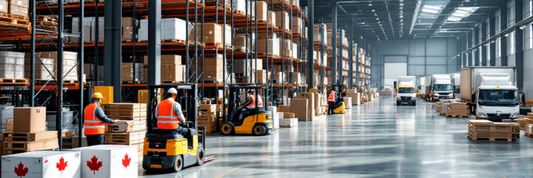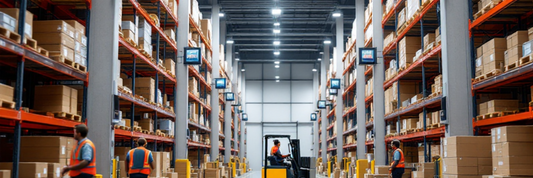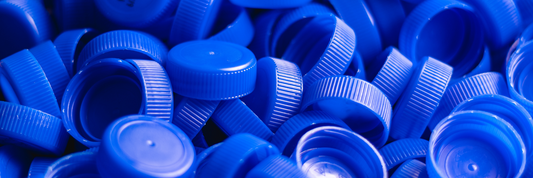Paper napkins offer a convenient and disposable option compared to cloth napkins. They come in a variety of sizes, designs, and absorbency levels, making them suitable for any occasion. This guide explores the advantages of paper napkins, factors to consider when choosing them, popular types and sizes, and the pros and cons of virgin versus recycled paper options. So, dive in and discover how paper napkins can be a surprisingly versatile and practical choice for your needs!
- Importance of Quality Napkins in Restaurants
- Decorative Paper Napkin Folding Ideas for Party
- Should Your Food Business Use Recycled Paper Napkins?
Advantages of Using Paper Napkins over Cloth Napkins
While cloth napkins are making a comeback due to their environmental benefits, paper napkins still have some advantages:
- Convenience: Paper napkins are disposable, so there's no need to worry about laundering them after use. This is especially convenient for picnics, barbecues, or messy meals.
- Sanitation: You can use a fresh napkin every time, which can be ideal for people with allergies or sensitivities.
- Cost-effective: Paper napkins are generally cheaper than cloth napkins, especially when you consider the cost of laundry.
- Variety: Paper napkins come in a wide variety of designs, colors, and absorbency levels, so you can find ones that fit your needs and style.
Choosing the Right Paper Napkin: Things to consider
Choosing the right paper napkin for your restaurant goes beyond just aesthetics. Here are some key factors to consider:
- Restaurant Type: The first step is identifying your restaurant's category (QSR, casual dining, fine dining, cafe, or takeaway). This defines your typical clientele and their expectations. Fine dining establishments might prioritize thicker, more luxurious napkins, while casual cafes might opt for standard options.
- Customer Traffic: Consider your table turnover rate (high, medium, or low). High-traffic restaurants like QSRs may find expensive, highly absorbent napkins become a significant expense. Conversely, restaurants with a slower pace and focus on conversation might benefit from offering a more substantial, medium-quality napkin.
- Menu Type: The type of food you serve impacts napkin needs. Buffet-style dining, with customers potentially needing frequent cleaning, might call for larger, highly absorbent napkins. A la carte service or quick snacks might require a standard size with moderate absorbency.
- Average Per Cover (APC): Balance cost with customer experience. If your APC (average customer spend) is low, it might not be practical to splurge on premium napkins. Remember, it's about finding the right balance between functionality and cost.

Popular Types and Sizes of Paper Napkins
Popular Types of Paper Napkins
There are several popular types of paper napkins, each suited for different occasions and needs. Here's a breakdown of the most common ones:
- Beverage Napkins (or Cocktail Napkins): Small and single-ply, these are ideal for holding drinks, wiping condensation, or cleaning up after appetizers or finger foods. Often found in bars and cafes, they're not meant for heavy-duty use.
- Snack Napkins: Slightly larger and of better quality than beverage napkins, these are perfect for quick bites at takeaways, cafes, or events. They can also be handy for wiping spills in the kitchen and sometimes for light meals.
- Luncheon Napkins: The go-to option for casual dining, these napkins offer a bigger size and double-ply construction, making them suitable for sit-down meals or buffets. They're more absorbent and durable than beverage or snack napkins.
- Dinner Napkins: A step up from luncheon napkins, these boast a larger size and higher-quality paper for enhanced absorbency. Commonly used in both casual and some fine-dining establishments, they can last through an entire dinner.
Popular Sizes of Paper Napkins
When it comes to sizes, there are different sizes of paper napkins. Below is a table showing popular sizes for the popular napkins types.
|
Type |
Size (inch) |
Size (cm) |
Ply |
Ideal For |
Napkins per Guest |
|
Beverage (Cocktail) |
4" x 4" |
10 x 10 |
1 |
Bars, Cafes |
1-2 |
|
Snack |
5" x 5" |
12.5 x 12.5 |
1-2 |
Takeout, Quick Service, Events |
1-2 |
|
Luncheon |
6" x 6" |
15 x 15 |
2 |
Casual Dining, Buffets |
1-2 |
|
Dinner |
8" x 8" |
20 x 20 |
2-3 |
Casual & Fine Dining |
1-2 |
|
Airlaid (Luxury) |
8" x 8" |
20 x 20 |
2-3+ |
Upscale Fine Dining, Events |
1 |
Understanding the Quality of Paper Napkins
Understanding the quality of paper napkins goes beyond just their size and design. Here's a breakdown of key factors that influence a napkin's performance:
- Paper Pulp: This is the fundamental building block of paper napkins. The type of pulp used significantly impacts the final product.
- Virgin Pulp: Made from fresh wood fibers, virgin pulp offers superior strength and absorbency. These napkins tend to be brighter white and softer.
- Recycled Pulp: Eco-friendly and cost-effective, recycled pulp napkins are made from post-consumer waste paper. While offering good absorbency, they might not be as soft or white as virgin pulp options.
- Semi-Virgin Pulp: This combines virgin and recycled pulp, creating a balance between cost, environmental impact, and quality.
- Absorbency: This refers to the napkin's ability to soak up liquids. It's crucial for effective wiping and cleaning. Higher-quality napkins generally boast better absorbency.
- Thickness and Ply: Thicker napkins with more plies (layers) offer greater durability and absorbency. Single-ply napkins are thinner and less absorbent, while 2-ply or 3-ply offer better performance.
- Whiteness: While brightness can be aesthetically pleasing, it doesn't directly correlate with quality. Some processes to achieve high whiteness can affect the napkin's softness.
- Embossing: This decorative technique creates raised designs on the napkin surface. It can serve multiple purposes:
- Increased Surface Area: Embossing creates a textured surface, increasing the overall surface area, which can enhance absorbency.
- Enhanced Texture: Embossing adds visual interest and a more luxurious feel to the napkin.
- Improved Bonding: In some cases, embossing patterns can improve the bonding between plies, leading to a more durable napkin.
- Comfort or Softness: This aspect is subjective and depends on personal preference. Virgin pulp napkins tend to be softer, while recycled pulp options might feel slightly rougher. Embossing patterns can also influence perceived softness.

Which Is Better to Use: Virgin or Recycled?
Selecting between virgin and recycled paper napkins hinges on your priorities. Here's a breakdown of their key advantages and disadvantages to guide your decision-making process:
Virgin Paper Napkins:
Advantages:
- Superior Softness and Absorbency: Virgin pulp offers a luxurious feel and effectively absorbs liquids, enhancing user experience.
- Brighter Whiteness: These napkins typically boast a more aesthetically pleasing, bright white appearance.
- Enhanced Strength: Virgin pulp napkins tend to be more durable and less likely to tear during use.
Disadvantages:
- Higher Environmental Impact: Production necessitates the harvesting of new trees, potentially contributing to deforestation.
- Increased Cost: Manufacturing virgin pulp is generally more expensive, leading to a higher price point for the napkins.
Recycled Paper Napkins:
Advantages:
- Eco-Friendly Choice: They promote sustainability by reducing landfill waste and conserving trees through the use of recycled materials.
- Cost-Effectiveness: Recycled pulp is often cheaper, making them a budget-conscious option.
Disadvantages:
- Potentially Less Soft and Absorbent: Recycled fibers can be shorter and weaker, resulting in a slightly rougher feel and potentially lower absorbency compared to virgin pulp.
- Duller Whiteness: Recycled pulp napkins may not achieve the same level of bright white as virgin pulp options.
Making the Right Choice:
- Prioritize Softness, Absorbency, and Whiteness: Opt for virgin pulp napkins if a luxurious feel, superior absorption, and a bright white appearance are your primary concerns.
- Focus on Sustainability and Cost: Choose recycled pulp napkins if you prioritize minimizing environmental impact and cost-effectiveness, while acknowledging a potentially less luxurious user experience.
Some manufacturers offer napkins made from semi-virgin pulp, which blends virgin and recycled fibers. This provides a middle ground, offering a balance between softness, environmental consciousness, and affordability. Ultimately, the optimal choice depends on your specific needs and priorities. Consider the trade-offs between user experience, environmental impact, and cost to make a well-informed decision for your situation.
Conclusion
In conclusion, paper napkins offer a convenient and versatile solution for various needs. From understanding the different types and sizes to navigating the world of virgin versus recycled pulp, this guide has equipped you with the knowledge to make informed choices. When selecting paper napkins, consider the occasion, desired user experience, environmental impact, and cost to find the perfect fit. With the right napkin choice, you can enhance your dining experience, promote sustainability, or simply maintain a clean and convenient setting.









